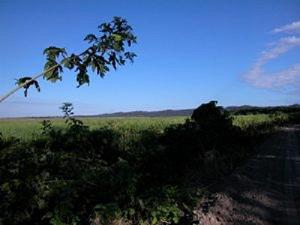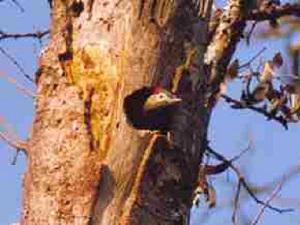Natalia Politi
Other projects
27 Feb 2009
Using Woodpeckers to Inform Sustainable Forestry in the Piedmont Forests of Argentina
This project aims to understand the effect of forest practices on cavity trees directly and cavity-nesters indirectly to guide timber management. We hope that the information obtained will stimulate government agencies to promote strong new legislation for sustainable forest management, and to implement new and existing forest management legislation.

The large and diverse array of values that humans place on forest ecosystems make conflicts over forest conservation and resource extraction inevitable. This is especially true in montane forests because these forests are particularly fragile, are characterised by high species richness, and deforestation of montane forests has increased steadily.

National parks in northwest Argentina retain the region’s last remnants of mature Yungas montane forests, and are very important for conservation of biodiversity. Processes jeopardizing these protected areas include isolation, degradation, and continuing pressures to convert surrounding forests to agriculture. Unfortunately, only a small percentage of the total forested land can be set aside as reserves and thus management of forests outside reserves will determine the fate of biodiversity.
Humans will continue to use forest products so it is important that activities surrounding national parks are carefully managed to balance biological diversity and forest utilization. Forests that are not managed sustainably will eventually lose their economic and ecological value and are likely to be converted to non-forest land uses and thus jeopardize the conservation of biodiversity. Among the biodiversity of the montane forests of Argentina that can be affected by forest exploitation are cavity nesters, since they are especially sensitive and have declined dramatically in some logged forests where they were not taken into consideration due to a decrease in tree density, especially older, larger trees, after timber harvesting.
Obviously, it is necessary to understand the effect of forest practices on cavity trees directly and cavity-nesters indirectly to guide timber management. Our project has started to generate this information that was previously unavailable. By understanding the habitat requirements of cavity nesters (e.g., minimum diameter, stand density) we will be able to develop conservation activities for these species.
The conservation strategy developed for this guild may allow them to function as umbrella species for conservation of the forest ecosystem as a wh. Wolee hope that the information obtained will stimulate government agencies to promote strong new legislation for sustainable forest management, and to implement new and existing forest management legislation. In the long-term an adaptive management program should be undertaken to further refine these forest management standards. Finally, we will promote the creation of protected areas in those areas where we find that timber harvesting has not been intense and ecological values remain high.